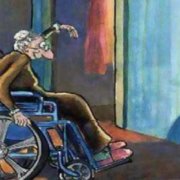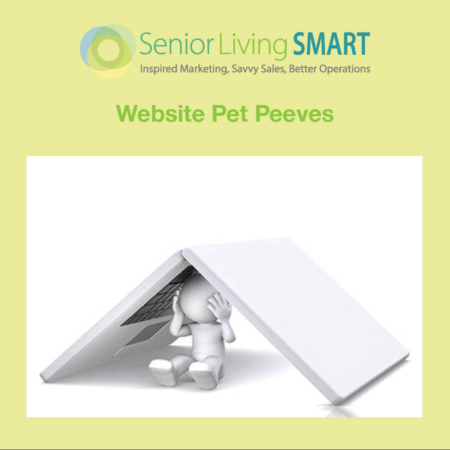In my constant quest to keep up with all things senior living marketing, I recently read an article published by Senior Housing News called “The Secrets To Growing Senior Living Sales & Occupancy.”
In a nutshell, here are the so-called secrets:
- Do deep discovery.
- Ask the right questions to get the right information.
- Understand the difference between senior living marketing and sales.
- View marketing as an investment, not a cost center.
- Get the executive director involved in the sales process and train employees to understand the sales process.
Really? These are “secrets”? This same article could have been written 10 years ago!
Here’s the REAL secret: the way prospects engage with senior living communities has dramatically changed.
As such, our senior living marketing and sales tactics need to evolve, too.
We can’t keep recycling old “insights,” like the ones outlined above from that article, because our prospects expect more today than they did 10 years ago – or even three years ago.
So, what can your teams do to better engage with today’s prospects?
Keep reading…
1. Remember that your senior living website is your #1 sales tool.
It’s no surprise that the majority of shoppers go online first, especially when hunting for a particular product. But the Pew Research Center reports that most people begin their searches online when making big life decisions as well. And moving to a senior living community certainly qualifies as a big life decision.
Sure, when people turn to Google as they research senior living options, they might encounter your Google Business Profile and other review sites. But they will ultimately land on your website since it effectively serves as the hub of your community’s online presence.
WHAT YOU CAN DO: It’s time to change the website experience from focusing on community features and benefits (in other words, the “let me tell you about me” model). Instead, re-position your site so that it becomes a valuable resource that seniors, caregivers, and professionals will visit often as they research options. Need ideas for improving your site? Choose our affordable senior living website audit, which will deliver clear action items.
2. Live chat can turn websites into lead generators.
Organic leads are great, but unless you quickly engage them, they will bounce over to a competitor’s site or a paid referral site. (The latter means providers will be buying back move-ins who had initially visited their website!)
Live chat, on the other hand, can quickly engage website visitor by demonstrating empathy and helping visitors access the info they’re looking for. An effective live chat host can generate qualified leads that can be transferred directly from the chat host to a community representative or turned into a scheduled tour. Chat can also provide evening and weekend coverage at a very low cost.
WHAT YOU CAN DO: There are many chat options available, but we typically recommend SiteStaff, because the chat hosts are US-based with specialized training in healthcare settings, like senior living.
3. Videos can help convert prospects into sales.
Here’s a stat for you: 80% of website visitors will stop and watch a video. Talk about engagement! There are many ways to use video, too, from background b-roll to video testimonials from happy residents to virtual tours.
And here’s the even better news: not all video has to be professionally shot. Smartphone videos can work well, especially on social media channels, like Facebook.
WHAT YOU CAN DO: Pick up your phones and start shooting! Yes, you need to keep privacy laws in mind, but start shooting video. Short and sweet (think 30 seconds to a minute) can work well. Online editing software can allow you to add in calls-to-action, but you don’t even need to go to that far when sharing on social: just post with a brief intro.
And don’t underestimate using video for more formal things, like tours or room planners. One product we particularly like: DesignFloorPlan.com.
4. Transparent pricing matters.
It’s fair to say that cost plays a big role when people shop around for senior living options.
However, most communities make it impossible to find pricing info on the website, leaving prospects to bounce over to a paid referral site who will not only provide your pricing information, but also your competitors’ info.
We understand that you want to sell your value first before providing prices, because you’re concerned prospects will experience sticker shock, particularly if they don’t have the full context. But the lack of pricing transparency is not helpful to prospects or professionals looking for information.
WHAT YOU CAN DO: Consider making your pricing available through a short opt-in form with basic contact information. This scratches two itches: visitors get the info they want, and the sales team has the ability to follow up to establish value and offer resources to help fund senior living.
5. A better “template strategy” can reduce senior living marketing and sales costs.
One of the biggest marketing spends in senior living today is print. Think event flyers, invitations, incentives, direct mail, and postcards, just to name a few items. The problem is that the cost of graphic design, printing, and mailing continues to climb. Not to mention that the shelf life for these items is days or a few weeks TOPS.
The good news? A smarter “template strategy” can reduce these costs. Imagine having all the print items you regularly use at your fingertips as templates that are already outfitted with your logo and brand colors. All you have to do is customize them with the relevant details for that particular marketing campaign. Goodbye, design costs! Goodbye unnecessary printing!
WHAT YOU CAN DO: Check out our SMARTbrand and SMARTbrand+ options. We have a free version and an affordable subscription service that allows you to easily create the materials you need. Or if you like the idea of creating a full-blown template strategy, check out our SMARTstores.
6. Senior living events still work!
“The majority of people who know someone in senior housing have been influenced by this experience (73.0%), most often in a positive way (57.0%)” finds Imagination in their research study. Bottom line: senior living events still work!
WHAT YOU CAN DO: Make sure you include the following in your senior living marketing plan:
- Friend & family referral programs
- New resident welcome events for friends
- Address change cards for new residents to send to friends and neighbors
- Coupons for meals, salon services, weekend stays, and community events
Need help? Check out our senior living event management solutions.
Senior living marketing has changed. Work with an agency that’s evolved, too.
We’re not just any agency. We’re a senior living marketing agency. Our staff has industry experience, which sets us apart from other agencies (even the ones who also “specialize” in senior living marketing). Get in touch today and request your complimentary 30-minute brainstorming session.












